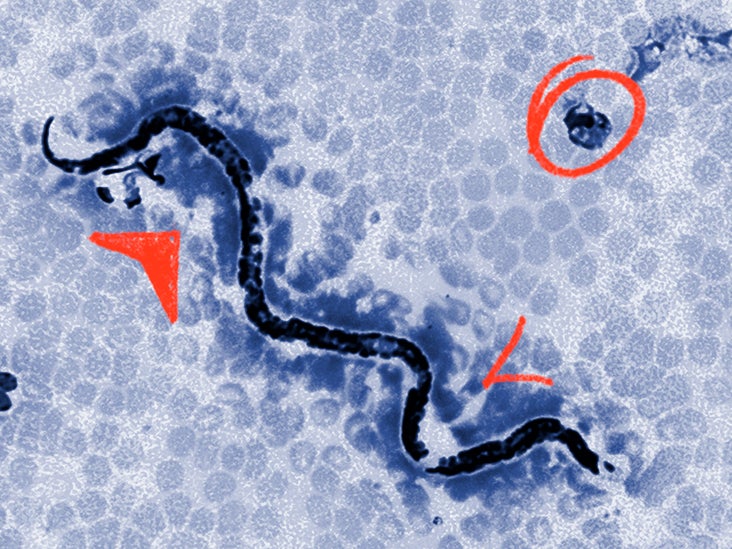Types of human parasite: Worms, infections, and causes - Medical News Today

There are three types of parasites that can cause disease in humans. Within these types are numerous species.
Parasites are organisms that live in or on a living host of another species. They survive by taking nutrients from this host.
In this article, we detail the different types of parasites and parasitic infections that can affect humans.
There are three types of parasites that can cause diseases in humans.
- Protozoa: Protozoa parasites are single-celled organisms. Protozoa can only multiply, or divide, within the host.
- Helminths: These are worm parasites. They are
typically visible to the naked eye at their adult stage. Unlike protozoa, they cannot multiply in humans. - Ectoparasites: These live on rather than in their hosts. They include lice, fleas, and mosquitos.
According to the
Learn more about parasites in humans here.
Many types of parasites can affect humans. Here are some examples of parasites and the diseases they can cause.
Malaria
Plasmodium is a single-cell parasite that causes malaria. This disease causes fever, headaches, and chills. It can be fatal.
The Anopheles mosquito carries this bloodborne parasite and transmits it through biting humans. There are five types of plasmodium that can cause malaria, and there were an estimated
Chagas disease
This affects the blood, muscles, nerves, heart, esophagus, and colon. It is transmitted through an insect bite. Over
Toxoplasmosis
This is a parasitic pneumonia
Acanthamoebiasis
This tiny ameba
Trichomoniasis
Also known as "trich," this is a sexually transmitted infection (STI). It is the result of the parasite Trichomonas vaginalis. It affects the female urogenital tract. It can exist in males, but usually without symptoms.
Other protozoa
Other protozoa infections include:
Worms, or helminth organisms, can affect humans and animals. Types of worm parasites include:
Roundworm
Ascariasis, or a roundworm infection, does not usually cause symptoms, but the worm
Hookworm
These
Beef and pork tapeworms
Toxocariasis
A roundworm transmits this infection from animals to humans. It affects the eyes, brain, and liver.
Whipworm
Also
Elephantiasis lymphatic filariasis
This
Other helminths
Other types of worm parasites include:
- Echinococcus tapeworm
- Diphyllobothrium latum tapeworm
- anisakiasis
- raccoon roundworm
- clonorchiasis
- dioctophymosis
- Guinea worm
- hymenolepiasis
- Enterobiasis pinworm
- Fasciolosis liver fluke
- Fasciolopsiasis intestinal fluke
- gnathostomiasis
- Loa loa filariasis
- mansonellosis
- river blindness
- lung fluke
- schistosomiasis, bilharzia, or snail fever
- sparganosis
- strongyloidiasis
- trichinosis
Ringworm is sometimes mistaken for a worm, but it is not a worm. It is a fungal infection.
Ectoparasites are parasites that live on the outside of the body. Fleas, lice, and bedbugs are common ectoparasites.
Bedbugs
Bedbugs are small insects that live on clothing and bedding. Their bites can become itchy and cause skin discoloration and swelling.
Lice
Lice are parasitic insects that live off of human blood. The
Demodex
Demodex folliculorum are tiny mites that live in and around the hair follicles. Typically they do not cause noticeable adverse symptoms. However, they can cause a range of ocular diseases if they infest the eyelashes or eyebrows.
Scabies
Scabies is a condition that results from tiny mites, called Sarcoptes scabiei var. hominis, burrowing into the skin. Scabies is highly contagious and can spread through skin-to-skin contact.
Screwworm
Screwworms are the fly larvae that burrow into the skin. They can cause severe infection and disease.
There are three main types of parasites that can affect humans: protozoa, helminths, and ectoparasites. These parasites can live on or in the human body and cause various diseases.
These parasites are often the result of consuming contaminated foods or water, though insects and other animals can also carry parasites.
Comments
Post a Comment